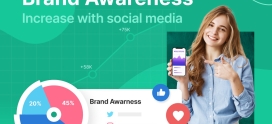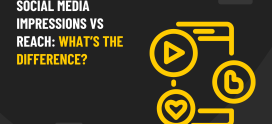
Exploring Audience Targeting Tools
- 04 May 2024
- by: Aniyya Nawab
- in: Social Media
- note: no comments
Exploring Audience Targeting Tools: Maximizing Reach and Engagement Across Social Media Platforms
In today’s digital age, understanding your audience is crucial for the success of any marketing campaign. Audience targeting tools have emerged as indispensable assets for businesses seeking to connect with their target demographic effectively. From Facebook and TikTok to YouTube, Instagram, and Snapchat, these tools empower marketers to pinpoint and engage specific audiences with precision. In this article, we’ll delve into the world of audience targeting tools and explore how they can be leveraged across various social media platforms.
 The Importance of Audience Targeting Tools
The Importance of Audience Targeting Tools
Audience targeting tools enable marketers to identify, segment, and reach specific groups of people based on demographics, interests, behaviors, and other relevant criteria. By tailoring marketing efforts to target these segmented audiences, businesses can increase the relevance and effectiveness of their campaigns, ultimately driving higher engagement, conversions, and ROI.
Audience Targeting Tools on Social Media Platforms
Facebook offers a comprehensive suite of audience targeting tools through its Ads Manager platform. Marketers can create custom audiences based on factors such as demographics, interests, behaviors, and engagement with their Facebook Page or website. Additionally, Facebook’s Lookalike Audience feature allows businesses to reach new users who share similar characteristics with their existing customer base.
TikTok
TikTok’s advertising platform provides audience targeting options based on demographics, interests, devices, and behaviors. Marketers can target users based on factors such as age, gender, location, interests, and even specific TikTok categories or hashtags. With TikTok’s growing user base and engagement levels, businesses can effectively reach their target audience and drive brand awareness on the platform.
YouTube
YouTube offers robust audience targeting tools through its Google Ads platform. Marketers can target users based on demographics, interests, keywords, topics, and placements (specific channels or videos). YouTube’s TrueView ads, which allow users to skip ads they’re not interested in, ensure that advertisers only pay when their ad is viewed, making it a cost-effective option for reaching targeted audiences on the platform.
Instagram’s advertising platform, integrated with Facebook’s Ads Manager, offers similar audience targeting options to Facebook. Marketers can create custom audiences based on demographics, interests, behaviors, and engagement with their Instagram account or website. With Instagram’s visually compelling format and engaged user base, businesses can effectively reach their target audience and drive engagement on the platform.
Snapchat
Snapchat’s advertising platform provides audience targeting options based on demographics, interests, behaviors, and location. Marketers can target users based on factors such as age, gender, interests, device usage, and even specific Snapchat categories or interests. With Snapchat’s highly engaged and youthful user base, businesses can effectively reach their target audience and drive brand engagement on the platform.
Best Practices for Using Audience Targeting Tools
To maximize the effectiveness of audience targeting tools across social media platforms, marketers should consider the following best practices:
- Define Your Target Audience: Conduct thorough research to understand the demographics, interests, and behaviors of your target audience on each platform.
- Segment Your Audience: Divide your audience into segments based on relevant criteria to tailor your messaging and content to their specific needs and preferences.
- Test and Iterate: Continuously test different targeting options, ad formats, and messaging to identify what resonates best with your target audience and optimize your campaigns accordingly.
- Monitor Performance Metrics: Track key performance metrics such as reach, engagement, click-through rates, and conversion rates to gauge the effectiveness of your audience targeting efforts and make data-driven decisions.
Conclusion
Audience targeting tools play a vital role in helping businesses connect with their target audience effectively across social media platforms. By leveraging the advanced targeting options and features offered by platforms like Facebook, TikTok, YouTube, Instagram, and Snapchat, marketers can maximize the relevance and impact of their marketing campaigns, ultimately driving higher engagement, conversions, and ROI in the ever-evolving digital landscape.



